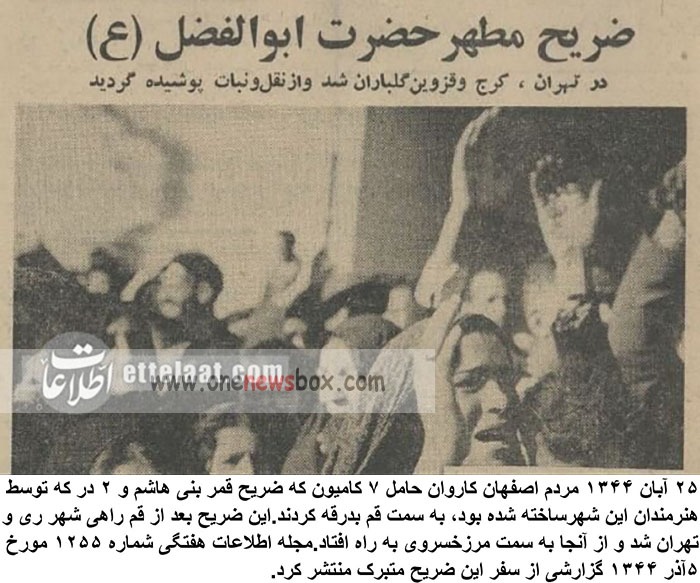The final days of Aban 1344 (November 1965) stand out in Iran’s collective memory as a time when devotion, craftsmanship, culture, and communal emotion converged in a unique and unforgettable event. The journey of the newly constructed shrine of Hazrat Abolfazl al-Abbas (AS)—Qamar Bani Hashem, the loyal brother of Imam Hussein (AS)—from Isfahan to Karbala was not merely a logistical endeavor. It was a spiritual caravan, a living testimony to the profound affection of the Iranian people for the Ahl al-Bayt, and an example of how religious devotion could mobilize entire cities, villages, and provinces.
This magnificent shrine, commissioned by Ayatollah Hakim, had been built by the master artists of Isfahan—goldsmiths, engravers, woodworkers, enamel artisans, and stone workers—who dedicated eighteen months of skilled labor to realize this sacred gift destined for Karbala. The caravan’s journey, documented in Etelaat Weekly Magazine, No. 1255, dated Azar 2, 1344, was one of the most elaborate religious ceremonies of that decade. The magazine reported the journey in detail, and the people of Iran read about it while witnessing photographs published by Etelaat Newspaper, the weekly “Etelaat Haftegi,” and Tehran Musavvar.

